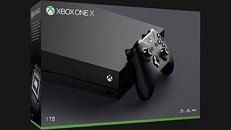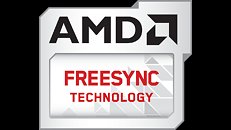Raevenlord
News Editor
- Joined
- Aug 12, 2016
- Messages
- 3,755 (1.18/day)
- Location
- Portugal
| System Name | The Ryzening |
|---|---|
| Processor | AMD Ryzen 9 5900X |
| Motherboard | MSI X570 MAG TOMAHAWK |
| Cooling | Lian Li Galahad 360mm AIO |
| Memory | 32 GB G.Skill Trident Z F4-3733 (4x 8 GB) |
| Video Card(s) | Gigabyte RTX 3070 Ti |
| Storage | Boot: Transcend MTE220S 2TB, Kintson A2000 1TB, Seagate Firewolf Pro 14 TB |
| Display(s) | Acer Nitro VG270UP (1440p 144 Hz IPS) |
| Case | Lian Li O11DX Dynamic White |
| Audio Device(s) | iFi Audio Zen DAC |
| Power Supply | Seasonic Focus+ 750 W |
| Mouse | Cooler Master Masterkeys Lite L |
| Keyboard | Cooler Master Masterkeys Lite L |
| Software | Windows 10 x64 |
It's finally happening - a variable refresh rate (VRR) technology is hitting the mainstream. Microsoft's Larry Hyrb and AMD's Antal Tungler announced the coming of the feature to the Xbox family of consoles yesterday, on an Xbox live stream (follow the link for the correct time stamp). This move likely marks a turning point in the VRR landscape, as this is likely just the beginning of FreeSync support on consoles - while the PlayStation side of the equation has remained silent until now, the usage of AMD-powered graphics on that console also marks an opportunity for FreeSync to increase its market impact even more. Where does this leave NVIDIA's G-Sync? Well, it depends on the market development, but one thing is for sure: FreeSync already is a royalty-free solution, and is now in the process of receiving a much more relevant consumer base than G-Sync could ever dream of.
FreeSync 2 + HDR support was touted for the Xbox One X from its introduction, but has been absent post launch. Now, users on the Xbox Insider fast ring should receive an update in the next few days that delivers the technology to their Xbox One X and Xbox One S games consoles. Users of the original Xbox One will also receive FreeSync support, albeit on its gen 1 iteration - which is still the more relevant today. All in all, this likely means that console games will move away from their locked 30 or 60 FPS frame rates in favor of variable refresh rates - which, when paired with a FreeSync-capable monitor (or TV set) will bring much improved graphics smoothness.




Of course, FreeSync being introduced to TVs is still a pretty barren landscape, so news of G-Sync's demise may be a Mark Twain-esque exaggeration. However, with 2018 TV sets moving to support the HDMI 2.1 standard with its built-in VRR technology means the opportunity cost for actual FreeSync implementation in TVs is very low. Should this scenario actually come to pass, then yes, G-Sync may have its days counted.
View at TechPowerUp Main Site
FreeSync 2 + HDR support was touted for the Xbox One X from its introduction, but has been absent post launch. Now, users on the Xbox Insider fast ring should receive an update in the next few days that delivers the technology to their Xbox One X and Xbox One S games consoles. Users of the original Xbox One will also receive FreeSync support, albeit on its gen 1 iteration - which is still the more relevant today. All in all, this likely means that console games will move away from their locked 30 or 60 FPS frame rates in favor of variable refresh rates - which, when paired with a FreeSync-capable monitor (or TV set) will bring much improved graphics smoothness.




Of course, FreeSync being introduced to TVs is still a pretty barren landscape, so news of G-Sync's demise may be a Mark Twain-esque exaggeration. However, with 2018 TV sets moving to support the HDMI 2.1 standard with its built-in VRR technology means the opportunity cost for actual FreeSync implementation in TVs is very low. Should this scenario actually come to pass, then yes, G-Sync may have its days counted.
View at TechPowerUp Main Site




 I should not be here
I should not be here 

